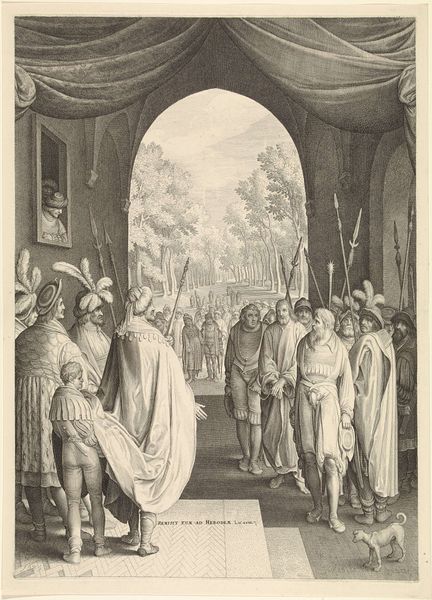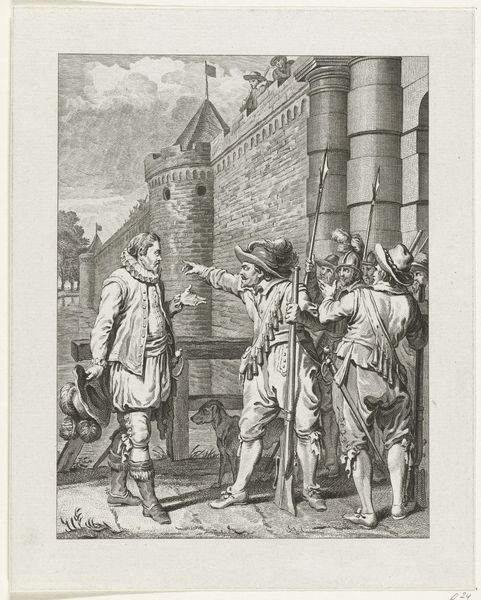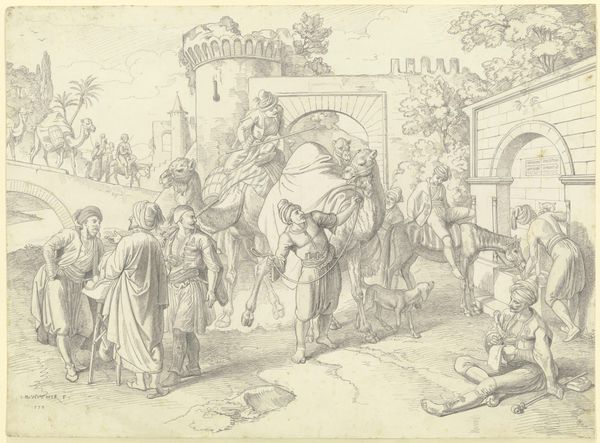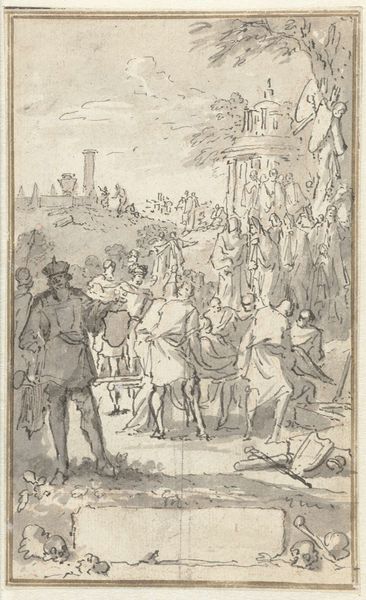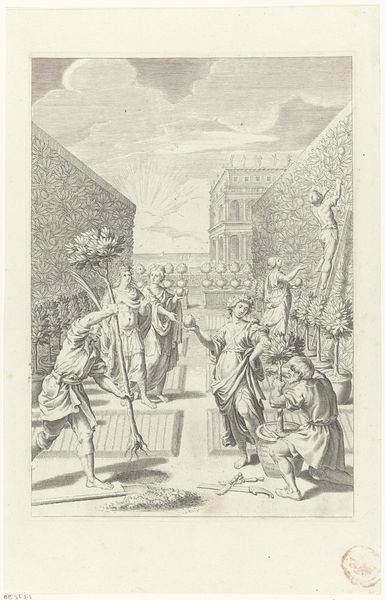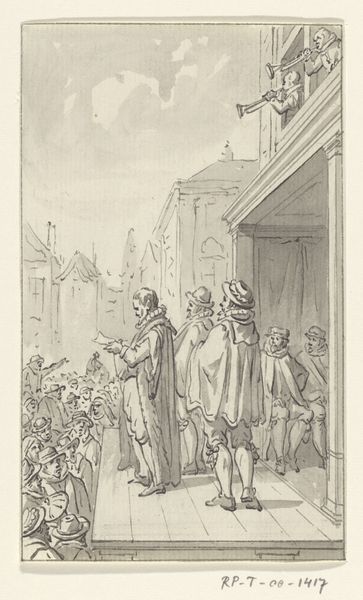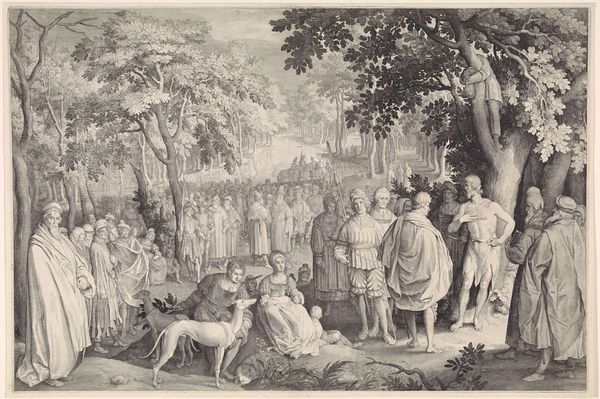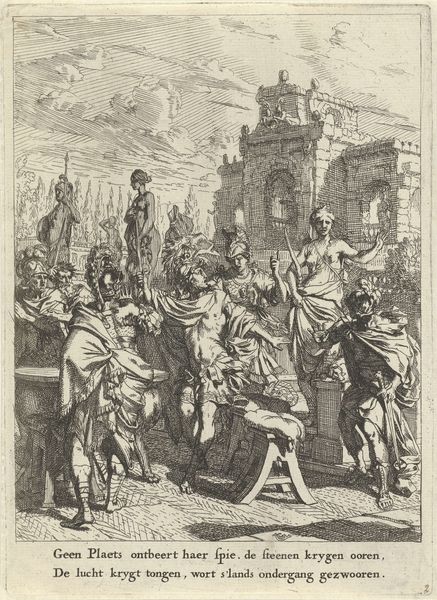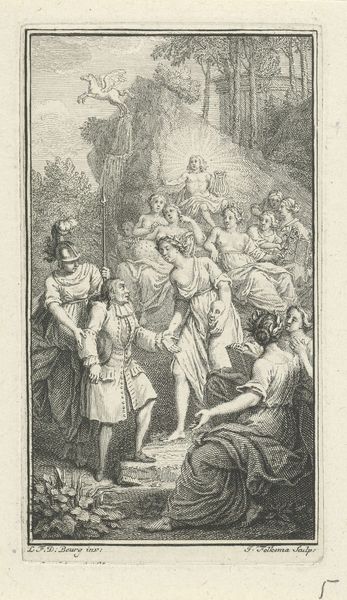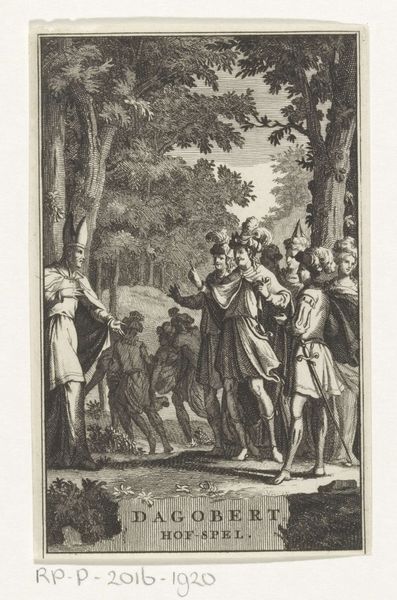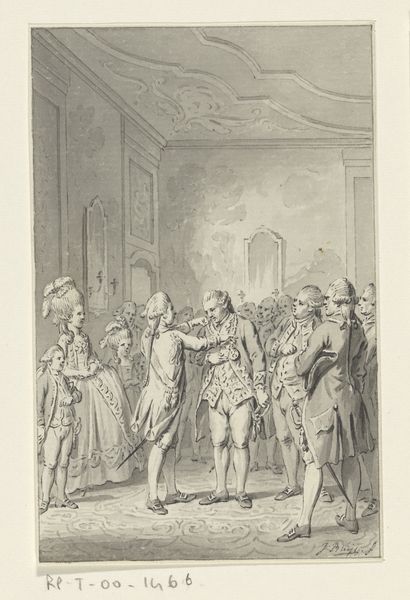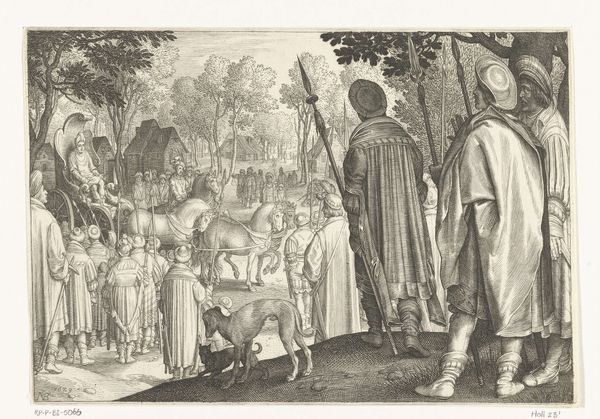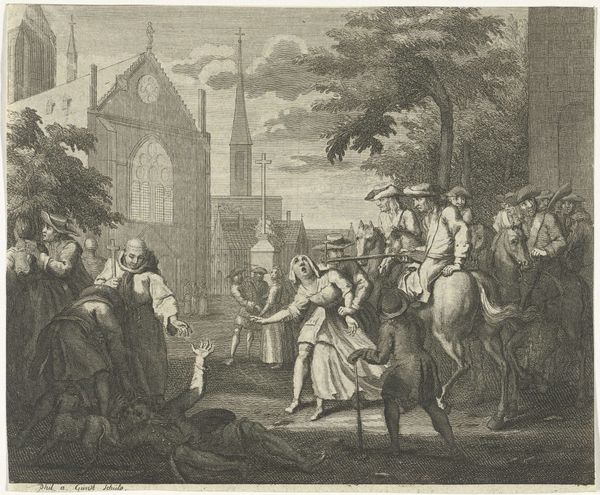
print, engraving
#
narrative-art
# print
#
figuration
#
11_renaissance
#
history-painting
#
engraving
Dimensions: width 458 mm, height 635 mm
Copyright: Rijks Museum: Open Domain
Editor: This engraving, "Ecce Homo," was created in 1632 by Nicolaes de Bruyn, and it depicts a scene absolutely brimming with tension. What catches my eye is the contrast between the relatively calm, almost picturesque backdrop, and the sheer fury in the foreground crowd. What's your take on this work? Curator: It's a fascinating piece, especially when viewed through a historical lens. "Ecce Homo," meaning "Behold the Man," presents a pivotal moment of religious history that was strategically employed in the 17th century. This wasn't merely an artistic depiction, but also a pointed statement about power and authority. The choice of engraving, as a readily reproducible medium, implies a desire for widespread dissemination of the imagery, which could be read as social commentary in pictorial form. Editor: I never really considered how the medium itself plays into that idea. Do you think the artist's trying to critique power? Curator: Precisely. Consider the role of the Church, the State, and the societal pressures they exerted. The engraving arguably turns the public gaze on the figures judging Christ, inviting viewers to question established authority. The architecture, framing the distant scene almost theatrically, serves to remind the viewer that what they're seeing is, in part, a constructed performance for a very real audience. Do you see a parallel between the onlookers in the print, and the audience looking *at* the print? Editor: Wow, I do. It’s almost as if de Bruyn’s pulling us, the viewers, into the same role as the crowd depicted. Like we’re also responsible in some way. That’s a heavy idea to communicate! Curator: It is, and the potency of the image lies in its capacity to engage the public not merely as observers, but as active participants in an ongoing social and political discourse. De Bruyn encourages each viewer to examine the ethics surrounding power. Editor: I never would have considered this print being so connected to larger conversations happening during that era. Thanks for shedding light on this! Curator: My pleasure! Seeing art as enmeshed within society transforms how we see its purpose and enduring relevance.
Comments
No comments
Be the first to comment and join the conversation on the ultimate creative platform.
